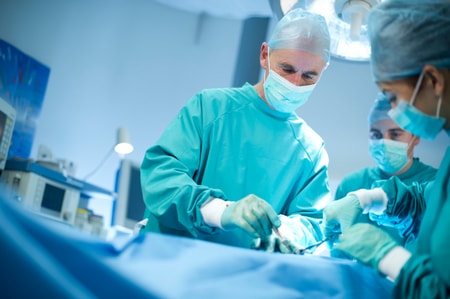Scar-Free Facial Reconstruction – Now Available in Israel

Incision-free facial reconstruction surgeries that don’t leave scars are no longer solely the domain of science fiction. ARAM Medical Center’s team managed to reconstruct a patient’s eye socket and cheek bone using a 3D-printed implant; it was then inserted through his eyelid. It is the first procedure of its kind in Israel; only a handful of similar operations have been performed worldwide.
Facial reconstruction surgeries are performed to minimize defects (facial asymmetry, diplopia and so on) caused by injuries (car accidents, gunshot wounds, etc.) or surgeries (i.e. due to cancer), or congenital defects. The main aim of such procedures is correcting both medical and aesthetic issues thus improving the patients’ quality of life. In order to achieve that, experts rebuild the missing piece(s) and make the implantation procedure as minimally invasive as possible.
Even though 3D-printing has been around for years, it is only recently that surgeons started using it to create implants. This was made possible thanks to improvements in printer accuracy that allowed creating prosthetic parts exactly matching a patient’s features. Before this development, the most common way of reconstruction involved taking bone and tissue from another area of the body and implanting it to close the defect.
Depending on complexity, prostheses take up to 12 hours to print. Recovery period can last between a few days (similarly to dental implants) to approximately two months, depending on size and the implantation area.
First Scar-free facial Reconstruction Surgery in Israel
The patient was a man in his thirties, who had sustained severe facial trauma as a result of a car accident approximately one year prior to the surgery. His left eye socket was shattered; treating doctors were forced to remove his eye and implant a glass prosthesis in its place. However, the injury and subsequent surgery left the patient with neural damage and severe facial asymmetry, further exacerbated by a tear in the ligament responsible for the eye’s shape.
A pre-operative 3D CT scan of the patient’s right (healthy) side of the face was performed to obtain a mirror image of the damaged bones. The required pieces were 3D-printed using PEEK (Polyether ether ketone) – a material that is not rejected by the body and that is flexible enough to be shaped during the surgery.
The specialists started by reconstructing 6 out of 7 bones comprising the eye socket. The implants were placed through miniature incisions on both sides of the eye and in the inner eyelid. No large facial incisions were made.
Second phase involved ensuring symmetry between the healthy eye and the prosthesis. To achieve that, specialists tied the torn ligament parts together (while taking precautions to avoid damaging the lacrimal duct) using a string passed through a miniature hole they had made in the patient’s nose.
Surgeries of this type are no longer a thing of the future; they’re performed by Israeli specialists in Israeli hospitals, greatly improving the quality of patients’ lives. If you would like more information about this type of surgery please don’t hesitate to contact us.


